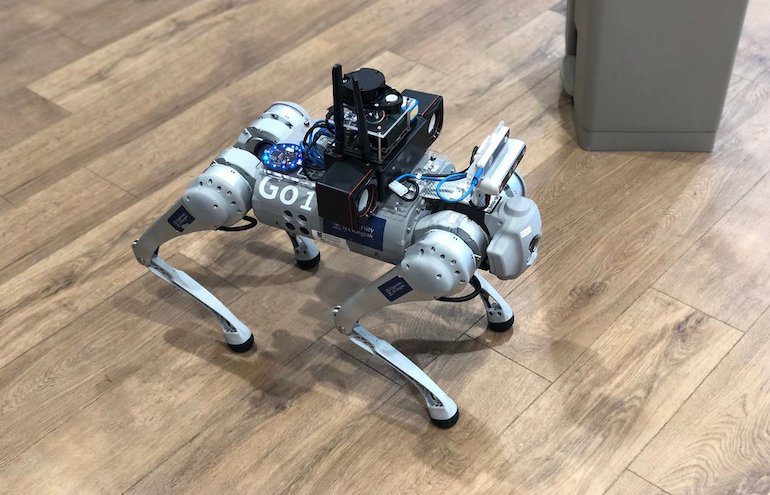TL;DR:
- RoboGuide, developed by the University of Glasgow, offers AI-driven assistance for visually impaired individuals.
- It integrates advanced technologies to provide real-time auditory feedback and precise navigation.
- Unlike GPS-dependent systems, RoboGuide relies on computer vision, enabling seamless indoor navigation.
- The robot overcomes challenges faced by previous solutions by employing sophisticated sensors for environment mapping.
- Software incorporating SLAM algorithms allows RoboGuide to adapt dynamically to its surroundings.
Main AI News:
In the realm of aiding the visually impaired, groundbreaking innovation is on the horizon: RoboGuide, a robotic service dog empowered by artificial intelligence (AI), is poised to revolutionize navigation for individuals with visual impairments. Developed through a collaborative effort led by the University of Glasgow in partnership with industry and charity stakeholders, RoboGuide represents a leap forward in assistive technology.
Unlike traditional robotic assistants, RoboGuide goes beyond mere physical guidance. It integrates advanced AI capabilities to offer comprehensive support, including real-time auditory feedback about the surrounding environment. By harnessing cutting-edge technologies integrated into a commercially available robotic framework, RoboGuide sets a new standard for assisting the visually impaired, as highlighted by the University of Glasgow.
Central to RoboGuide’s functionality is its reliance on computer vision, a technology that enables precise navigation in diverse settings. This strategic departure from GPS-dependent systems, often unsuitable for indoor environments, ensures seamless guidance regardless of signal limitations. Dr. Olaoluwa Popoola, the principal investigator of the project at the University of Glasgow, underscores this pivotal advancement, noting the challenges associated with conventional navigation methods.
While RoboGuide enters a landscape with existing solutions like Gilde from Glidance Inc., it distinguishes itself by overcoming key obstacles encountered by predecessors. Foremost among these challenges is the ability to navigate complex environments effectively, a feat made possible through RoboGuide’s sophisticated sensor array.
Dr. Wasim Ahmad, a co-investigator of the project, elaborates on RoboGuide’s innovative approach, emphasizing the integration of computer vision and 3D mapping technologies. Through comprehensive environmental scanning, the robot gains an unparalleled understanding of its surroundings, enabling it to identify and navigate around obstacles with precision.
Crucially, the team’s software development efforts play a pivotal role in RoboGuide’s operational prowess. Leveraging simultaneous localization and mapping (SLAM) algorithms, the software interprets sensor data in real-time, empowering the robot to adapt dynamically to its environment. This responsive navigation system not only enhances safety but also ensures optimal routing between destinations.
Conclusion:
RoboGuide represents a significant advancement in assistive technology for the visually impaired. Addressing key limitations of existing solutions and offering seamless indoor navigation through AI and computer vision opens up new possibilities for enhanced mobility and independence. This innovation signals a promising future for the market, with the potential for widespread adoption and improved accessibility for individuals with visual impairments.

